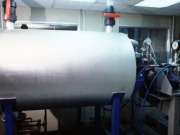
The Anaerobic Digestion (AD) company EnviTec Biogas has urged farmers to take advantage of subsidy schemes which support green energy, particularly when it comes to AD. The company plans, builds and services farm-scale AD plants across the UK and its Managing Director, Mike McLaughlin, has pointed out that farmers can build significant revenue streams from Feed-in Tariffs (FiTS) and the Renewable Heat Incentive (RHI) and that they should do so sooner than later.
“Green energy payment schemes like the Feed in Tariffs (FiTs) and the Renewable Heat Incentive (RHI) mean many farmers can tap in to significant and predictable revenue streams” Mr McLaughlin said. “The pressure on government to deliver on renewable energy commitments and to safeguard domestic energy production mean there will always be attractive incentives to produce heat and electricity with AD. But public sector budgets are being squeezed, which means the incentives on offer will not get any better than they are now. Farmers should investigate how AD could help their business sooner rather than later.”
Gavin Davies, manager at Stowell Farms in Wiltshire, echoed the call, saying that there are many benefits of investing in AD besides merely reducing costs and generating revenues from selling surplus power to the grid.
“An AD plant helps with slurry management, which means there’s no need for a lagoon and that in turn reduces odour” Mr Davies said. “The digestate produced at the end of the process saves us a lot of fertiliser costs and unlike slurry the nutrients are readily available. In fact, backing the AD side of a dairy business should be a no-brainer because it’s almost index linked and for us it represented a better investment than wind or photovoltaics.”
The EnviTec AD plant at Stowell Farms became operational late last year and is predicted to generate an income of more than £750,000 per year, a figure that will secure the future of the dairy for some time to come. The plant is capable of producing 4.1 million kWh of electricity and 3.55 million kWh of surplus heat. The electricity will be used on the farm with excess power sold on to the grid under a 20-year Feed-in Tariff. Around 85 percent of the electricity produced will be exported. While most of the heat generated by the plant will also be used on the farm, any excess heat will be pumped to a local leisure centre and two nearby schools.
The plant uses maize silage, grass silage, waste feed and slurry, all of which are produced on the farm, a 1,315 hectare (3,250 acre) beef, sheep, arable and dairy operation.
Further information:

